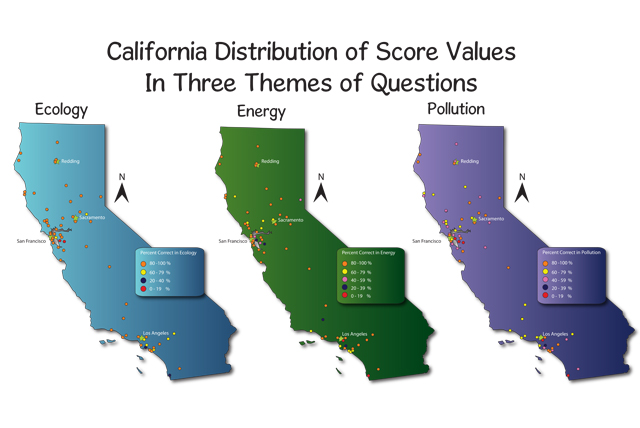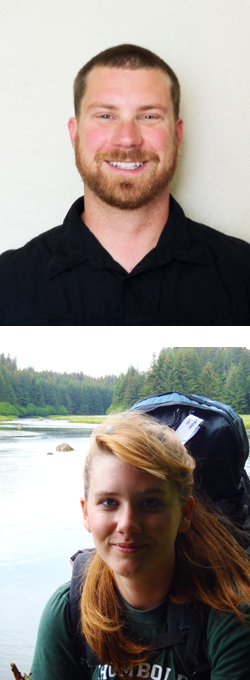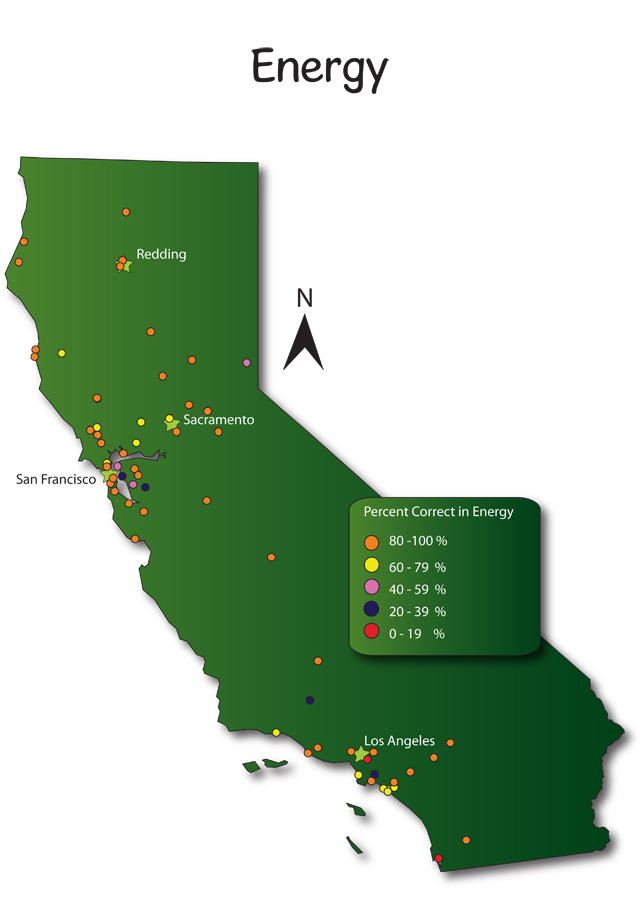
The study found Humboldt State students have a higher level of “environmental literacy” than their peers nationwide. That was true regardless of the students’ majors and hometowns.
Specifically, Humboldt State students scored better than the national average in each of the three categories. They scored 17 percent higher than the national average in the category of pollution, 28 percent higher in energy and 34 percent higher in ecology. Overall, they scored about 25 percent better than the national average overall.

The study was conducted by Jennifer Robinson (’12, Environmental Education) and Interpretation) and Geoffrey Hoopes (’11, Natural Resources Planning and Interpretation). After a class project, they were inspired to research environmental literacy, which is defined as a person’s understanding of the natural world around them and how his or her choices affect that environment.
Later, they decided to expand on the idea by using geographical information systems (GIS). “I thought it would be interesting to see how more students at HSU fit in,” Robinson says.
The two used survey questions from the National Environmental Education Foundation to measure environmental literacy of students in a range of classes, covering art, recreation, environmental studies and more.
After using identical questionnaires to gather data from roughly 125 students, Hoopes and Robinson were able to use about 70 responses to form a geographic picture of environmental literacy of HSU students in relation to their hometown, narrowing the focus to three major regions of California. They also grouped the questions by theme into three categories—pollution, energy and ecology—to gauge students’ grasp of specific issues.
Their findings demonstrated a much higher level of environmental literacy among HSU students.
“Our study shows that the university is graduating students who understand more about the environment and their relationship to the environment,” Robinson says.
During the study, Hoopes and Robinson learned about more than just environmental literacy levels.
“I had no idea how valuable GIS could be to furthering environmental education,” says Hoopes, who currently works with Humboldt County Parks. Hoopes added that GIS data could help pinpoint areas that need funding to increase environmental education and help create more informed and environmentally responsible communities. “In my career in land management, I’ll be able to incorporate what I’ve learned,” he said.
Robinson plans to open her own outdoor environmental education school to teach underprivileged children about the natural world. It’s a subject she’s been passionate about since she was a counselor at a residential environmental camp at the age of 14. Although she couldn’t see how GIS would be useful in her career at the outset of the class, she now has a different point of view.
“I can now look at a map, decipher it, decode it, see its hidden meanings and apply it to environmental literacy,” she says. “When I get ready to open my own outdoor environmental education school, I’ll have to find a safe location that’s easy for students to attend, figure out what kinds of facilities are available and do research to secure grant funding to help make it all happen. I just want to be a teacher, but I can see how GIS will play into those plans.”
Although Hoopes and Robinson see opportunities where their study could have gone further, they believe that their research was a valuable first step. By examining the impact Humboldt State has on educating environmentally conscious people, they believe there is the opportunity to build more support for environmental education nationwide.
“I’m a huge advocate for environmental education,” Robinson says. “Knowledge is caring.”
Humboldt State has a longstanding commitment to environmental responsibility. For more information, visit humboldt.edu/green.
